by John Keil
One of the most important things for the watchmaking industry is to ensure that today’s watchmakers have successors that can repair old watches, make new watches, and develop the next generation of watches. That’s no easy task given the demanding skill set that this requires. Fortunately, the next generation is coming on and is coming in hot, as Victor Monnin and Alexander Hazemann, two young watchmaking students, highlight as they take things to the next level with their school watches.
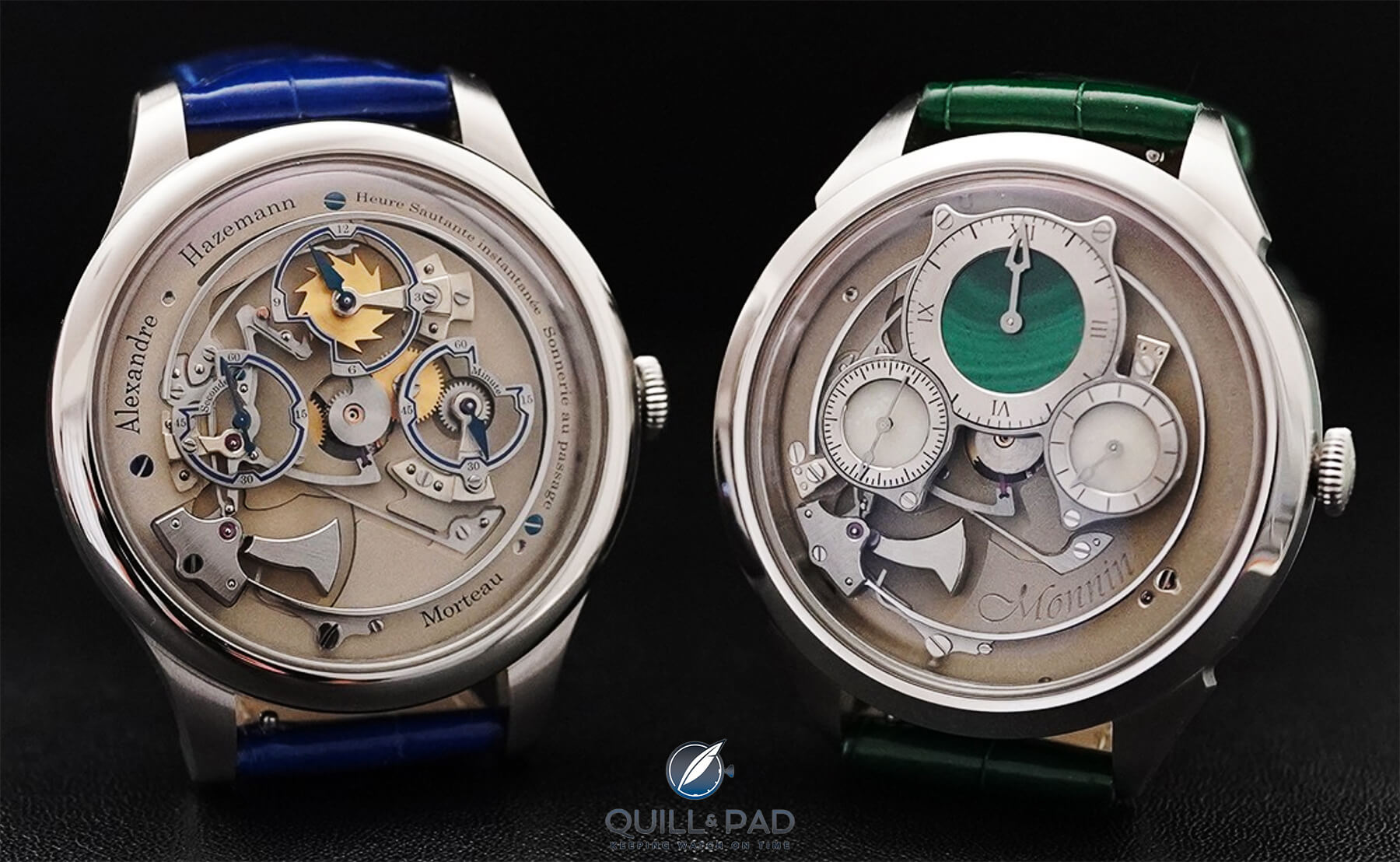
School watches: AH.02 by Alexander Hazemann (left) and L’Immortale by Victor Monnin
Chiming in unison
School watches are generally used in an old fashion sense, like in the time of the guilds when a project has to be completed perfectly to obtain the rank of master. For their 7th year at the Lycée Edgar Faure in Morteau, France, where both Victor Monnin and Alexander Hazemann study watchmaking, they made a sensational watch to demonstrate what they have learned and what they are worth. The school partnered with Arnold & Son, which gave the students access to their movement manufacture La Joux-Perret.
Base movements were essential, as asking students to completely develop a movement from scratch is too much to ask, as this takes even the most experienced manufactures a lot of time time. However, that doesn’t mean that they simply take a movement and install it in a watch case. For their watches, Monnin and Hazemann selected caliber LJP 6000 as a base movement, which they modified to create their vision and finished by hand.
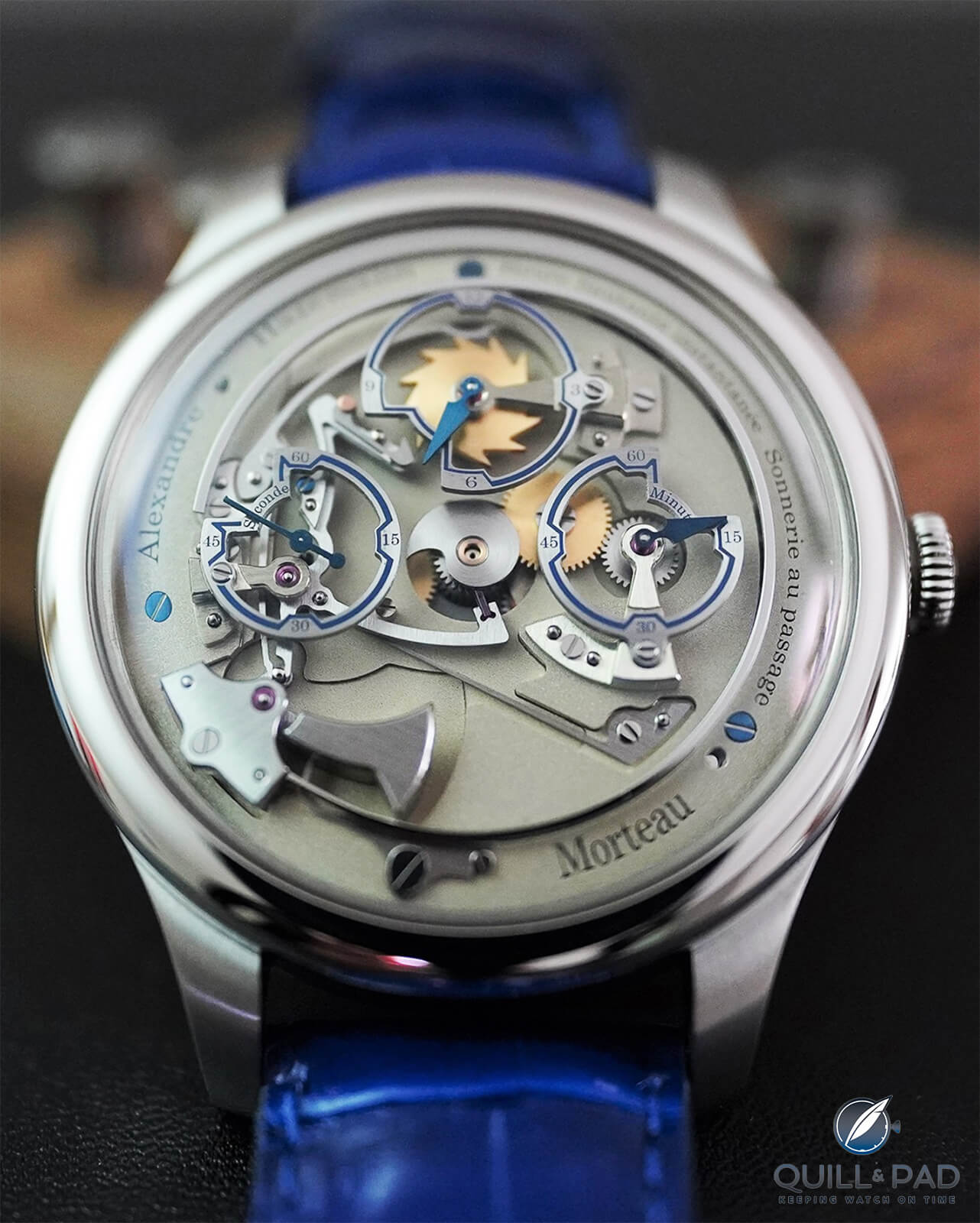
AH.02 school watch by Alexander Hazemann
From special to extra special
Monnin and Hazemann decided to team up and create something really special. As they have been friends for quite some time, they had the same outlook on the project. However, at this stage in their education, it is quite rare for two students to work on the same project, something that hadn’t happened at Lycée Edgar Faure for two decades. Partnering on a watch brings an extra dimension to the table, as well as increased risk. Fortunately, Monnin and Hazemann know each other well enough to take advantage of each other’s sharp minds and impressive skill sets.
Even then, they didn’t make it easy on themselves, as they set out to craft a jumping mechanism for the hour, combined with a striking mechanism that sounds when the hour changes. A very elegant complication, which they also made visible on the dial side. This gives them a chance to show all they had learned, including various decoration techniques. Getting there is not at all an easy task, as they first need to design the complication, make the necessary calculations to check all is right, and then go into the prototyping stage.
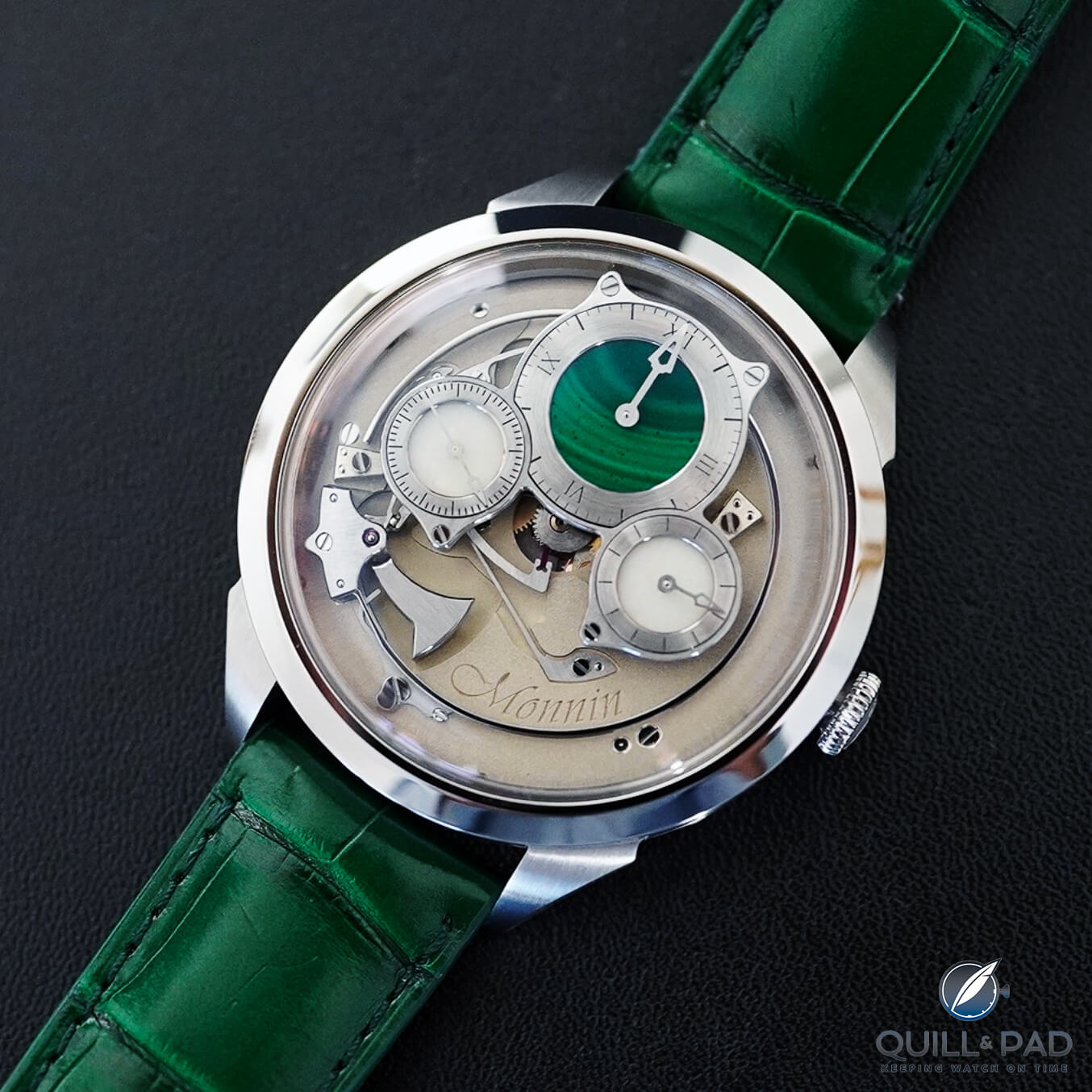
L’Immortale school watch by Victor Monnin
It took them a total of 8 months to craft their watches, and countless hours and sleepless nights to do so. To turn their ideas into reality, they also tapped into other sources for help. Not to do the work, but as sparring partners to bounce ideas off. Among them is also esteemed Master Watchmaker Emmanuel Bouchet, which is best known for crafting the Opus 12 for Harry Winston.
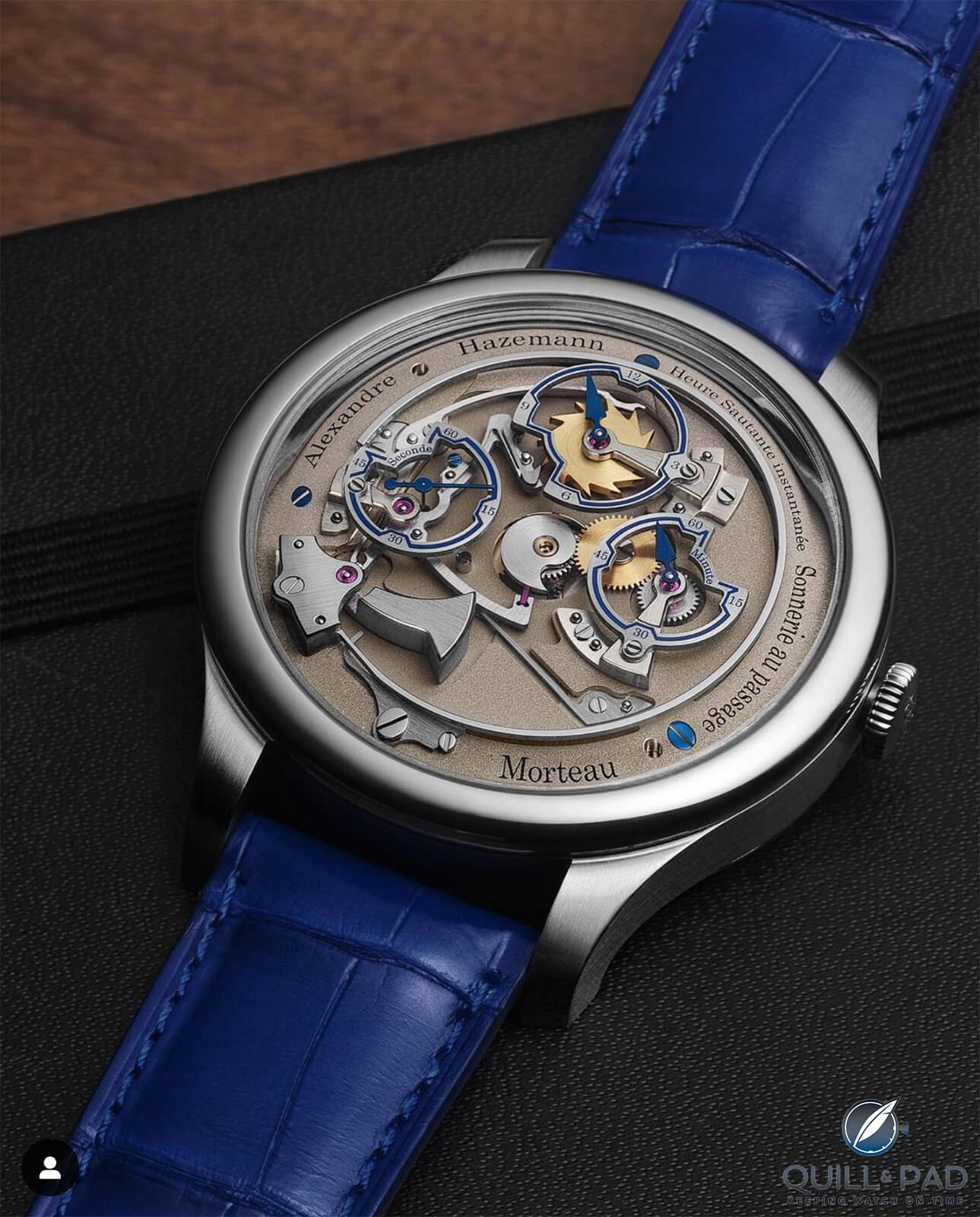
AH.02 school watch by Alexander Hazemann
Understanding aesthetics
Crafting watches is not only about function, the look is equally important. Here Monnin and Hazemann developed their own styles. Hazemann emphasized the technical side of their creation by creating a clean skeletonized look. He cleverly used blue as his color of choice, matching nicely with the blue hands and screws.
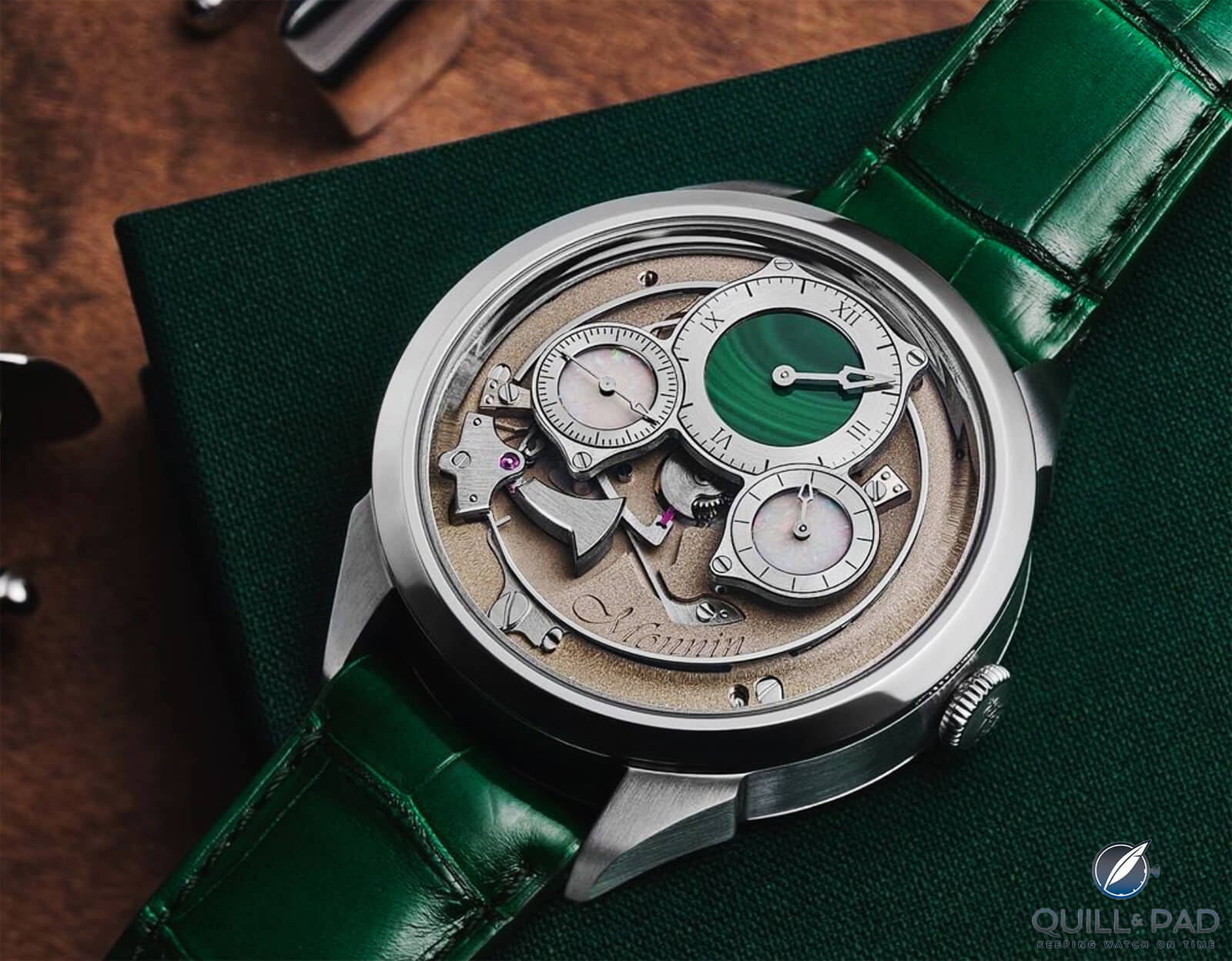
L’Immortale school watch by Victor Monnin
Monin opted for a more classic approach, using dials that cover part of the movement, hiding some of the magic, but allowing for a clear view on important parts including the hammer. His dial is distinctive as the hour display has a malachite center, giving it an exquisite flair.
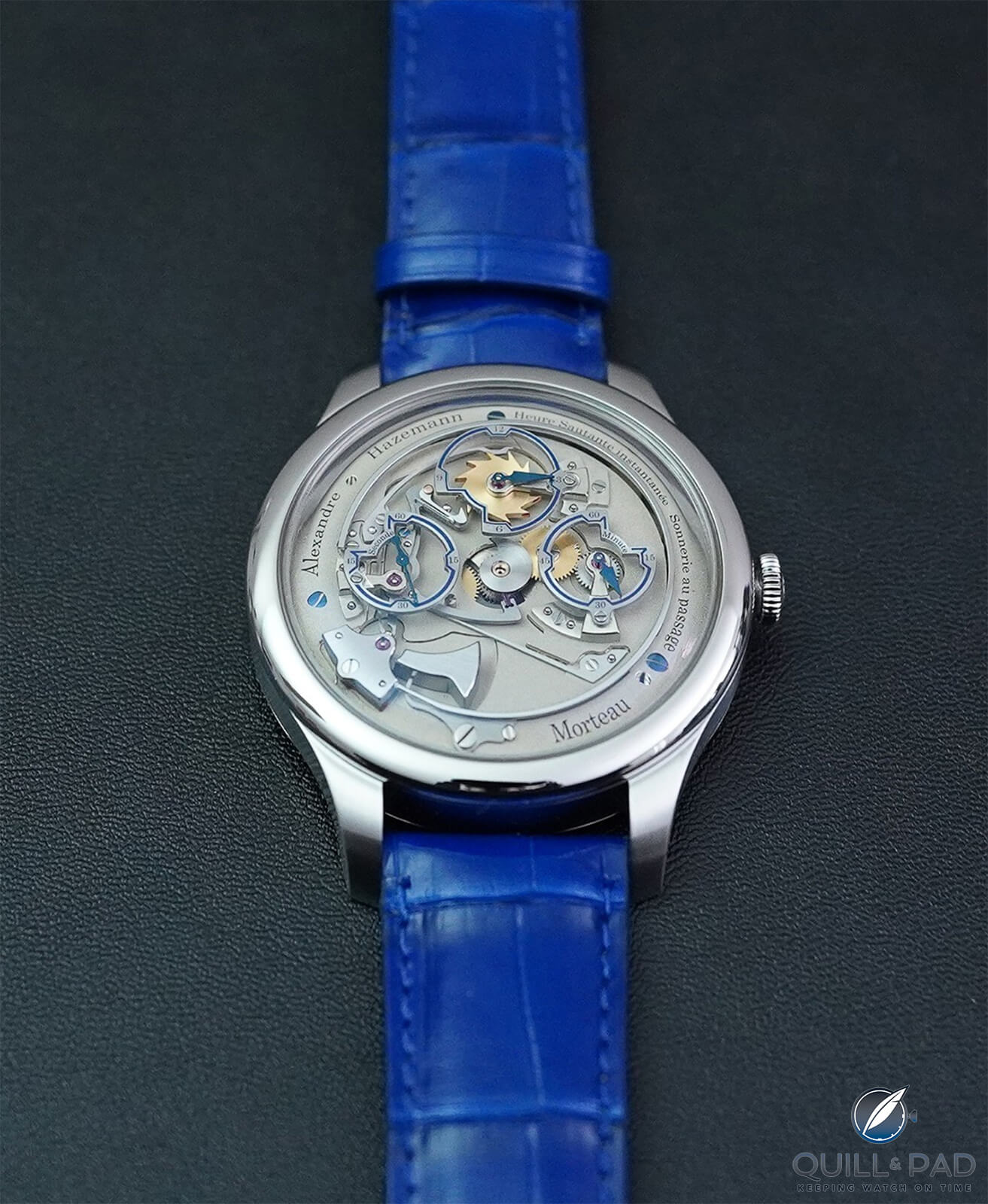
AH.02 school watch by Alexander Hazemann
Both watches are housed in a (different) stainless steel case and have a beautiful box-shaped sapphire crystal, which was made especially for these watches. The same goes for the alligator straps, which come from Manufacture Jean Rousseau.
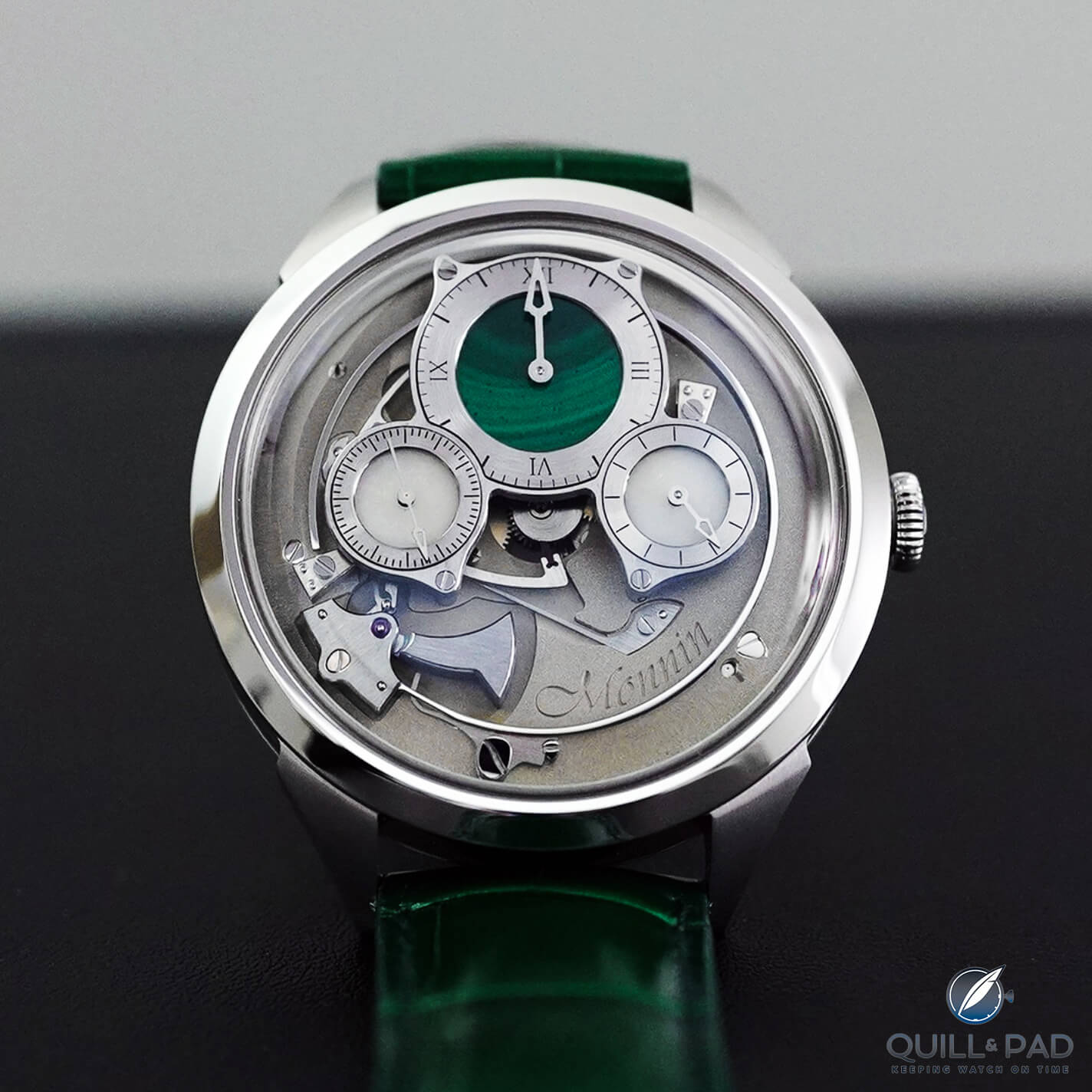
L’Immortale school watch by Victor Monnin
Good news and bad news
While a great success, Victor Monnin and Alexander Hazemann have unfortunately decided not to produce their watches on a larger scale; not yet anyway. This is quite understandable given the challenges that this poses, even when you can pre-sell them quite easily these days. Instead, both have found great places to work to gain experience. Alexander Hazemann continues his studies in Switzerland to become a watchmaking constructor in the workshops of Emmanuel Bouchet. Victor Monnin is following his heart in a slightly different direction, embracing artisanal watchmaking to make his dream of becoming a prototype watchmaker a reality. However, mark their names, as I think that we haven’t heard the last of these two very talented watchmakers.
For more information, please visit www.instagram.com/hazemann_watches and www.instagram.com/monnin_victor/
Quick Facts Victor Monnin & Alexandre Hazemann – L’Immortale and AH.02
Case: 43 x 12.8 mm, stainless steel,
Movement: automatic LJP 6900 (base movement) 4Hz/28,800 VpH, 50 hours power reserve, finished by hand
Functions: jump hours, minutes, seconds; chiming function when hour changes
Price: not for sale, personal school watches
You might also enjoy:
Visiting Torsti Laine, Independent Finnish Watchmaker In Switzerland, And His Festival Of Color
A Collector’s View: Old School By Massena Lab And Luca Soprana (Live Photos)
Why I Upgraded My D.Dornblüth & Sohn 99.1 Watch With A Handmade Ceramic Dial
Leave a Reply
Want to join the discussion?Feel free to contribute!





















































Harika
So shine